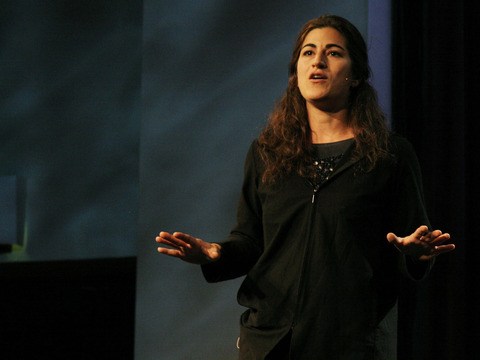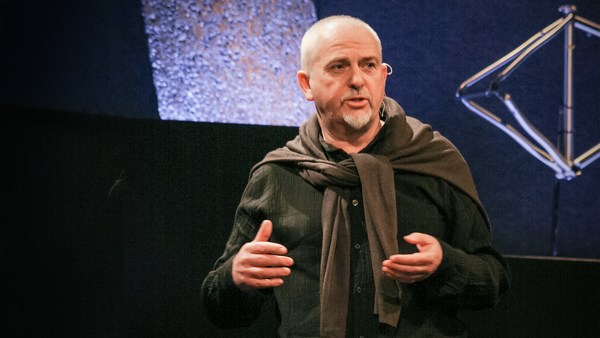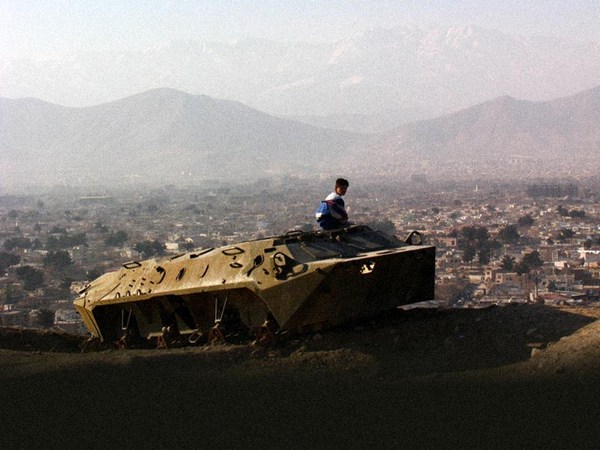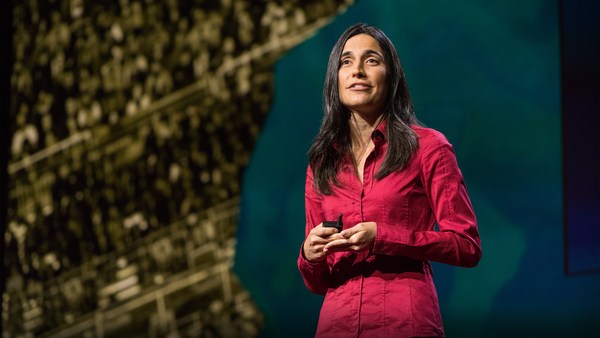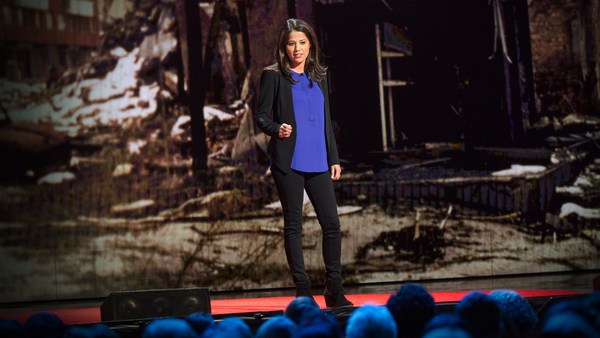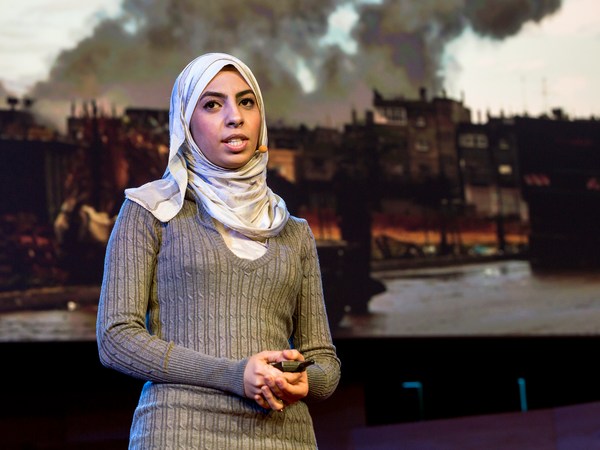I'm a filmmaker. For the last 8 years, I have dedicated my life to documenting the work of Israelis and Palestinians who are trying to end the conflict using peaceful means. When I travel with my work across Europe and the United States, one question always comes up: Where is the Palestinian Gandhi? Why aren't Palestinians using nonviolent resistance?
The challenge I face when I hear this question is that often I have just returned from the Middle East where I spent my time filming dozens of Palestinians who are using nonviolence to defend their lands and water resources from Israeli soldiers and settlers. These leaders are trying to forge a massive national nonviolent movement to end the occupation and build peace in the region. Yet, most of you have probably never heard about them. This divide between what's happening on the ground and perceptions abroad is one of the key reasons why we don't have yet a Palestinian peaceful resistance movement that has been successful.
So I'm here today to talk about the power of attention, the power of your attention, and the emergence and development of nonviolent movements in the West Bank, Gaza and elsewhere -- but today, my case study is going to be Palestine. I believe that what's mostly missing for nonviolence to grow is not for Palestinians to start adopting nonviolence, but for us to start paying attention to those who already are. Allow me to illustrate this point by taking you to this village called Budrus.
About seven years ago, they faced extinction, because Israel announced it would build a separation barrier, and part of this barrier would be built on top of the village. They would lose 40 percent of their land and be surrounded, so they would lose free access to the rest of the West Bank. Through inspired local leadership, they launched a peaceful resistance campaign to stop that from happening.
Let me show you some brief clips, so you have a sense for what that actually looked like on the ground.
(Music)
Palestinian Woman: We were told the wall would separate Palestine from Israel. Here in Budrus, we realized the wall would steal our land.
Israeli Man: The fence has, in fact, created a solution to terror.
Man: Today you're invited to a peaceful march. You are joined by dozens of your Israeli brothers and sisters.
Israeli Activist: Nothing scares the army more than nonviolent opposition.
Woman: We saw the men trying to push the soldiers, but none of them could do that. But I think the girls could do it.
Fatah Party Member: We must empty our minds of traditional thinking.
Hamas Party Member: We were in complete harmony, and we wanted to spread it to all of Palestine.
Chanting: One united nation. Fatah, Hamas and the Popular Front! News Anchor: The clashes over the fence continue.
Reporter: Israeli border police were sent to disperse the crowd. They were allowed to use any force necessary.
(Gunshots)
Man: These are live bullets. It's like Fallujah. Shooting everywhere.
Israeli Activist: I was sure we were all going to die. But there were others around me who weren't even cowering.
Israeli Soldier: A nonviolent protest is not going to stop the [unclear].
Protester: This is a peaceful march. There is no need to use violence.
Chanting: We can do it! We can do it! We can do it!
Julia Bacha: When I first heard about the story of Budrus, I was surprised that the international media had failed to cover the extraordinary set of events that happened seven years ago, in 2003. What was even more surprising was the fact that Budrus was successful. The residents, after 10 months of peaceful resistance, convinced the Israeli government to move the route of the barrier off their lands and to the green line, which is the internationally recognized boundary between Israel and the Palestinian Territories. The resistance in Budrus has since spread to villages across the West Bank and to Palestinian neighborhoods in Jerusalem. Yet the media remains mostly silent on these stories. This silence carries profound consequences for the likelihood that nonviolence can grow, or even survive, in Palestine.
Violent resistance and nonviolent resistance share one very important thing in common; they are both a form of theater seeking an audience to their cause. If violent actors are the only ones constantly getting front-page covers and attracting international attention to the Palestinian issue, it becomes very hard for nonviolent leaders to make the case to their communities that civil disobedience is a viable option in addressing their plight.
The power of attention is probably going to come as no surprise to the parents in the room. The surest way to make your child throw increasingly louder tantrums is by giving him attention the first time he throws a fit. The tantrum will become what childhood psychologists call a functional behavior, since the child has learned that he can get parental attention out of it. Parents can incentivize or disincentivize behavior simply by giving or withdrawing attention to their children. But that's true for adults too. In fact, the behavior of entire communities and countries can be influenced, depending on where the international community chooses to focus its attention.
I believe that at the core of ending the conflict in the Middle East and bringing peace is for us to transform nonviolence into a functional behavior by giving a lot more attention to the nonviolent leaders on the ground today. In the course of taking my film to villages in the West Bank, in Gaza and in East Jerusalem, I have seen the impact that even one documentary film can have in influencing the transformation.
In a village called Wallajeh, which sits very close to Jerusalem, the community was facing a very similar plight to Budrus. They were going to be surrounded, lose a lot of their lands and not have freedom of access, either to the West Bank or Jerusalem. They had been using nonviolence for about two years but had grown disenchanted since nobody was paying attention. So we organized a screening. A week later, they held the most well-attended and disciplined demonstration to date. The organizers say that the villagers, upon seeing the story of Budrus documented in a film, felt that there were indeed people following what they were doing, that people cared. So they kept on going.
On the Israeli side, there is a new peace movement called Solidariot, which means solidarity in Hebrew. The leaders of this movement have been using Budrus as one of their primary recruiting tools. They report that Israelis who had never been active before, upon seeing the film, understand the power of nonviolence and start joining their activities. The examples of Wallajeh and the Solidariot movement show that even a small-budget independent film can play a role in transforming nonviolence into a functional behavior. Now imagine the power that big media players could have if they started covering the weekly nonviolent demonstrations happening in villages like Bil'in, Ni'lin, Wallajeh, in Jerusalem neighborhoods like Sheikh Jarrah and Silwan -- the nonviolent leaders would become more visible, valued and effective in their work.
I believe that the most important thing is to understand that if we don't pay attention to these efforts, they are invisible, and it's as if they never happened. But I have seen first hand that if we do, they will multiply. If they multiply, their influence will grow in the overall Israeli-Palestinian conflict. And theirs is the kind of influence that can finally unblock the situation. These leaders have proven that nonviolence works in places like Budrus. Let's give them attention so they can prove it works everywhere.
Thank you.
(Applause)
